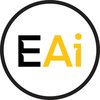Filter interviews by
Clear (1)
HINDCO CONSULTING SERVICES Mining Engineer Interview Questions, Process, and Tips
HINDCO CONSULTING SERVICES Mining Engineer Interview Experiences
1 interview found
(5 Questions)
- Q1. What is mining?
- Ans.
Mining is the process of extracting valuable minerals or other geological materials from the earth.
Mining involves digging, drilling, and blasting to access ores or minerals.
It can be done underground or in open pits.
Various methods are used such as surface mining, underground mining, and placer mining.
Examples include coal mining, gold mining, and diamond mining.
- Q2. How many types of explosives are there?
- Ans.
There are two main types of explosives: high explosives and low explosives.
High explosives: detonate with a supersonic shock wave, examples include TNT, C-4, and RDX
Low explosives: deflagrate at a subsonic speed, examples include black powder and smokeless powder
- Q3. What is vod explain it?
- Ans.
VOD stands for Vertical Opening Distance, which is a measurement used in mining engineering.
VOD is the vertical distance between two levels in a mine.
It is an important factor in determining the efficiency of ventilation systems in underground mines.
VOD can impact the safety and productivity of mining operations.
Example: A mining engineer must calculate the VOD to ensure proper airflow and ventilation in the mine.
Examp...
- Q4. What is solid blasting?
- Ans.
Solid blasting is a method used in mining to break up solid rock using explosives.
Solid blasting involves drilling holes into the rock, filling them with explosives, and detonating them to break up the rock.
It is commonly used in mining operations to extract minerals and ores from the earth.
The size and placement of the blast holes, as well as the type and amount of explosives used, are carefully calculated to ensure s...
- Q5. Which explosive is used in solid blasting?
- Ans.
ANFO (Ammonium Nitrate Fuel Oil) is commonly used in solid blasting due to its stability and effectiveness.
ANFO (Ammonium Nitrate Fuel Oil) is a commonly used explosive in solid blasting operations.
It is a mixture of ammonium nitrate and fuel oil, providing a stable and powerful explosive.
ANFO is preferred for its cost-effectiveness and ease of handling in mining and construction industries.
Interview Preparation Tips
Top trending discussions






Interview questions from similar companies

I applied via Naukri.com and was interviewed before May 2018. There were 5 interview rounds.
Interview Questionnaire
3 Questions
- Q1. Questions are related to your past working experience and the position that you applied for Microwave Transmission related questions: What is Microwave and types What is fadind and it's resolution steps D...
- Q2. PDH-SDH related questions- Difference between PDH and sdh Frame structure of sdh High order and low order bytes and alarms related to bytes Alarms in sdh Ethernet over sdh What is GFP, ENCAPSULATION, VCAT,...
- Q3. Generally your current work related questions Why you want to change your job What is your expectations from new job Where you seeing your self after 5 year's Current salary and expectations
Interview Preparation Tips
Experience: Related to offer they are giving and related cross questions
General Tips: I had been interviewed with Huawei in 2016 and total 2 rounds was there for me. Questions I already had shared, go through it.
I got my offer letter after 1 month after HR discussion but please follow up with HR team once you get call for your selection
Skills: Ethernet over SDH, SDH, Microwave, Technical Knowledge(ML, Microwave, Communication, Presentation Skills
Duration: 1-3 Months

I was interviewed before Feb 2024.
Discussion on the changes in tecehnology
Test followed by the questions and scenario based questions

I applied via Naukri.com and was interviewed before Feb 2023. There were 3 interview rounds.
(1 Question)
- Q1. General discussion
(1 Question)
- Q1. Complete overview of technology you are working
(1 Question)
- Q1. Client interview
Interview Preparation Tips

I applied via Approached by Company and was interviewed before Sep 2022. There were 2 interview rounds.

(3 Questions)
- Q1. Related to Power Sector
- Ans. Power cycle piping. Erection sequence of Boiler primary and secondary structure. T&P required at time of starting work.
- Q2. Related to Erection planning
- Q3. How much manpower required to complete the plan
- Ans.
The manpower required to complete a plan depends on the scope, complexity, and timeline of the project.
Manpower requirements can vary based on the size and complexity of the project.
Consider the skills and expertise needed for each task in the plan.
Factor in the timeline and deadlines for completing the plan.
Utilize project management tools to estimate manpower needs accurately.
Example: A large-scale construction proje...
Interview Preparation Tips


(1 Question)
- Q1. RF Parameters,KPI implementation,UL DL Throughput,SINR,RARP
(1 Question)
- Q1. Salary Discussion and Documents
Interview Preparation Tips

I was interviewed in Aug 2024.
(2 Questions)
- Q1. About HT and LT Transmission , Distribution and Backup Systems
- Q2. About work place and culture
Interview Preparation Tips

I applied via Recruitment Consulltant and was interviewed before Aug 2021. There were 3 interview rounds.

(2 Questions)
- Q1. What is your education
- Q2. What do you do beforehand?
(2 Questions)
- Q1. We have metal packing. can you
- Ans.
Yes, I can work with metal packing.
I have experience working with metal packaging in my previous job.
I am familiar with the different types of metal packaging materials and their properties.
I can use tools and equipment to handle and manipulate metal packaging.
I can follow safety protocols when working with metal packaging.
I can troubleshoot and fix issues with metal packaging if needed.
- Q2. Do you run the axle perfectly?
- Ans.
Yes, I have experience in running axles perfectly.
I have experience in operating and maintaining various types of axles.
I ensure that the axle is properly lubricated and aligned before running it.
I monitor the axle's performance and make adjustments as necessary.
I follow all safety protocols and guidelines while operating the axle.
For example, I have experience in running the axle of a heavy-duty truck and ensuring tha
Interview Preparation Tips
Market yourself. ...
Apply even if you're not fully qualified. ...
Job search like it's your job. ...
Use informational interviews to network. ...
Set yourself apart with letters of recommendation. ...
Know yourself and what you want. ...
Pump yourself up and stay positive.

(1 Question)
- Q1. What is SQL? Mssql
- Ans.
SQL (Structured Query Language) is a standard language for managing and manipulating databases, including Microsoft SQL Server (MSSQL).
SQL is used to retrieve and manipulate data in relational databases.
MSSQL is a popular relational database management system that uses SQL.
SQL queries are used to perform operations like selecting, updating, inserting, and deleting data.
Example: SELECT * FROM table_name WHERE condition;

(2 Questions)
- Q1. Basic physics. Mechanics etc.
- Q2. Acceleration due to gravity
- Ans.
Acceleration due to gravity is the force that pulls objects towards the center of the earth.
The acceleration due to gravity on Earth is approximately 9.8 m/s².
It varies depending on the location and altitude.
It is responsible for the weight of objects on Earth.
It is also used in various scientific calculations and experiments.
Interview Preparation Tips
HINDCO CONSULTING SERVICES Interview FAQs
Recently Viewed
Tell us how to improve this page.
HINDCO CONSULTING SERVICES Interviews By Designations
- HINDCO CONSULTING SERVICES HR Recruiter Interview Questions
- HINDCO CONSULTING SERVICES Mining Engineer Interview Questions
- HINDCO CONSULTING SERVICES General Manager and Unit Head Interview Questions
- HINDCO CONSULTING SERVICES HR Intern Interview Questions
- HINDCO CONSULTING SERVICES Data Entry Operator Interview Questions
- HINDCO CONSULTING SERVICES Data Entry Typing Interview Questions
Interview Questions for Popular Designations
- Junior Mining Engineer Interview Questions
- Mining Mate Interview Questions
- Mining Overman Interview Questions
- Electrical Engineer Interview Questions
- QA QC Engineer Interview Questions
- Mines Manager Interview Questions
- Senior Mining Engineer Interview Questions
- Mining Engineer Trainee Interview Questions
- Show more
HINDCO CONSULTING SERVICES Mining Engineer Interview Process
based on 1 interview
Interview experience
Interview Questions from Similar Companies
|
Associate Recruiter
4
salaries
| ₹0 L/yr - ₹0 L/yr |
|
Back Office Executive
3
salaries
| ₹0 L/yr - ₹0 L/yr |
|
HR Recruiter
3
salaries
| ₹0 L/yr - ₹0 L/yr |

ABC Consultants

Mafoi Management Consultants

Team Lease

Kelly Services
- Home >
- Interviews >
- HINDCO CONSULTING SERVICES Interview Questions >
- HINDCO CONSULTING SERVICES Mining Engineer Interview Questions









